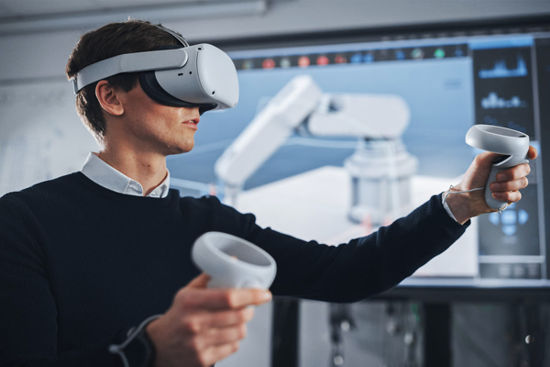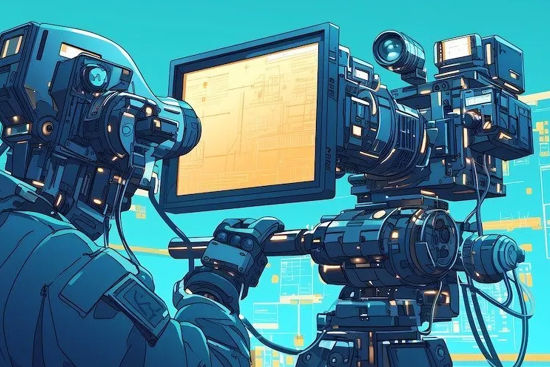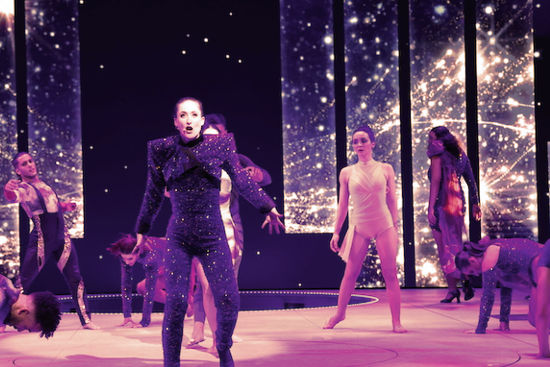Technology is no longer just a silent backstage; it is the orchestra conductor that is revolutionizing the entertainment industry. From home cinema to virtual concerts, 2025 marks an era where experiences are not only high-quality but also deeply immersive, accessible, and personalized.
1. Total Immersion: The Era of Extended Reality (VR and AR)
Virtual Reality (VR) and Augmented Reality (AR) have moved past the niche phase to become the new standard for immersion. Whether transporting us to digital worlds or enriching physical reality, these technologies are taking digital experiences to their highest level.
| Sector | Key Innovation | The Impact |
| Film and Series | VR Movie Theaters | Platforms like Oculus Cinema allow users to watch premieres in shared virtual environments, replicating the social experience without leaving home. |
| Video Games | Dynamic AR Games | Beyond Pokémon GO, games now integrate the real world in sophisticated ways, creating interactive and dynamic adventures driven by the environment. |
| Live Events | VR Concerts and Festivals | The forced migration during the pandemic has become an opportunity. Platforms like VeeR allow users to attend concerts and sports events with total immersion, breaking geographical barriers. |
Technically Speaking: VR uses headsets to create immersive 3D worlds, while AR superimposes digital layers onto physical reality (via mobile devices or smart glasses).
2. AI in Cinema: The Algorithm Behind the Perfect Script
Artificial Intelligence has transcended the improvement of special effects; it is now a co-star in film production, from the initial idea to the final distribution.
- Assisted Screenwriting: Tools like ScriptBook use Machine Learning to analyze a script's structure and predict its potential commercial success, helping studios make more informed decisions.
- Hyper-Realistic Post-Production: Neural networks and Deep Learning enable the creation of more realistic digital characters than ever before, and enhance or restore scenes with astonishing accuracy, drastically reducing manual work.
- Predictive Audience Analysis: AI algorithms analyze audience behavior to adapt content or marketing, ensuring the final product resonates with viewer preferences.
Technically Speaking: AI learns from massive databases of successful films to generate content, analyze plot, or refine visual effects autonomously.
3. Video Games: Open Worlds and Photorealistic Graphics
The next generation of consoles (like PlayStation 5) and high-end PCs is taking the gaming experience to a turning point, blurring the line between the virtual and the real.
- Absolute Visual Fidelity: Ray Tracing technology simulates the physical behavior of light, creating reflections, shadows, and textures that make game environments almost indistinguishable from a photograph.
- Intelligent NPC Behavior: Advanced AI now creates Non-Player Characters (NPCs) with dynamic and realistic behavior patterns. In open-world games (like Cyberpunk 2077), the AI adapts characters' reactions to the player's actions, deepening immersion.
- Accessibility Without Hardware: Cloud Gaming (Google Stadia, NVIDIA GeForce Now) removes the barrier of expensive hardware, allowing players to stream high-quality games on any internet-connected device.
4. Interactive Streaming: From Spectator to Protagonist
The way we consume series, movies, and video games has shifted from passive to social and decisive.
- Decision-Driven Narratives: The success of titles like Bandersnatch has prompted platforms like Netflix to explore more interactive films and series, where the viewer makes decisions that alter the plot, offering a unique, personalized experience.
- The Rise of Social Spectacle: Platforms like Twitch and YouTube Gaming have transformed video games into a mass sport. Live streams enable real-time interaction between creators and the audience, creating a social and participatory experience.
- Hyper-Personalized Recommendations: Machine Learning algorithms on platforms like Spotify and Netflix have improved their accuracy, offering content suggestions that feel predictive, based on a deep analysis of consumption behavior.
5. Live Entertainment: Beyond the Stage
Real-time entertainment is utilizing technology to scale the reach and spectacular nature of events.
- Virtual Macro-Concerts: Artists like Travis Scott have demonstrated the power of hosting massive concerts within gaming platforms (like Fortnite), attracting millions of fans to large-scale, interactive experiences that go beyond a traditional show.
- Augmented Experiences: At physical concerts, Augmented Reality (via smart glasses) superimposes real-time visual effects and graphics onto the stage performance, enriching the experience for the attending audience.
The Future is Interactive
As we move forward into 2025, the convergence of these technologies is undeniable. Entertainment is becoming more dynamic, personal, accessible, and, above all, interactive. The boundaries between creator and consumer are blurring, promising a future where experiences will be as exciting as the technological innovations themselves.
The only thing certain is that, thanks to technology, boredom is officially nearing extinction.






